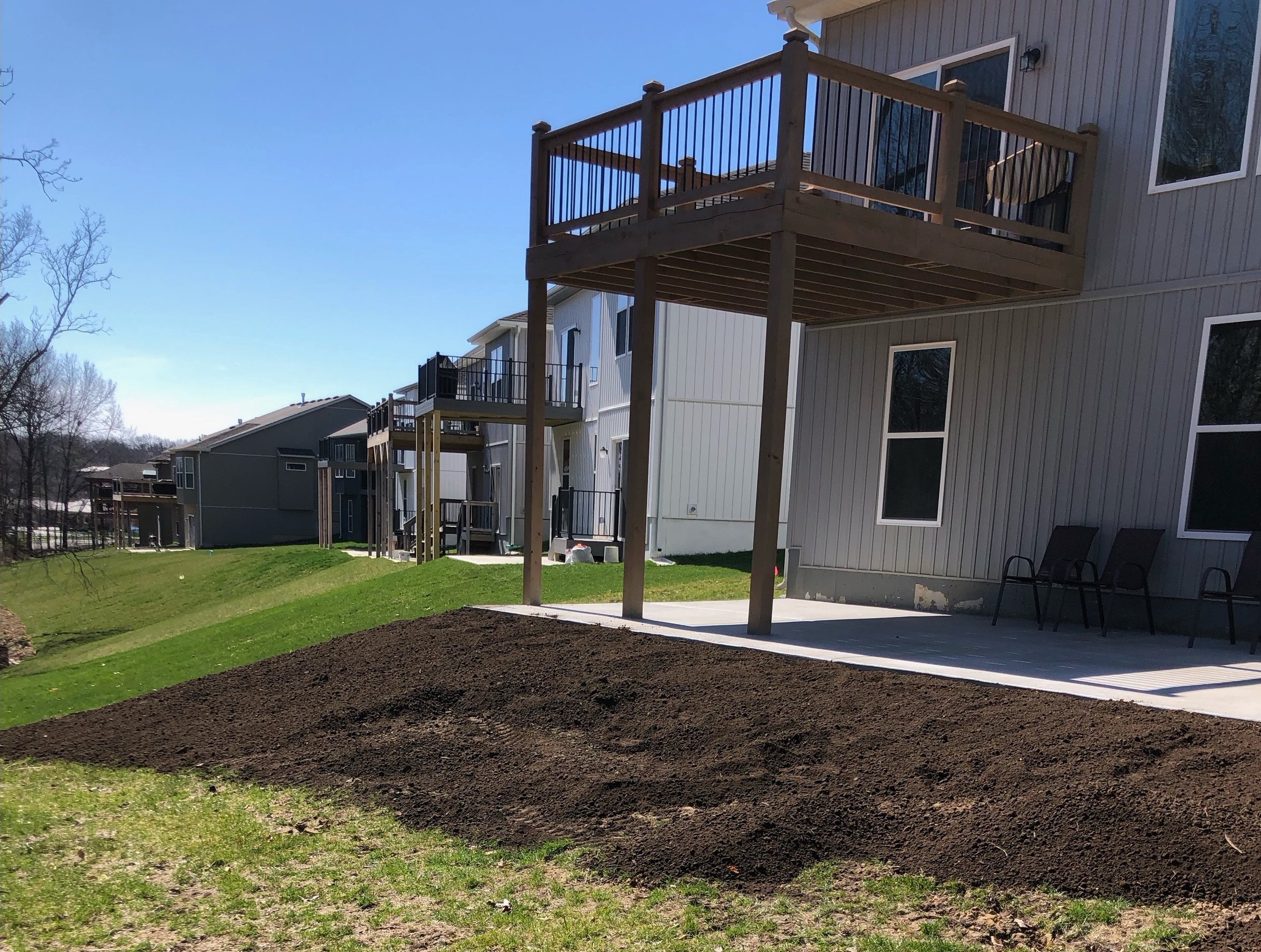Backfilling Around Concrete With Topsoil
When it comes to projects involving concrete, whether it's a new driveway, patio, or walkway, the significance of proper backfilling with topsoil cannot be overstated. Topsoil plays a crucial role in ensuring the stability, longevity, and safety of concrete structures. In this blog post, we'll delve into the importance of topsoil in backfilling around concrete and why it should never be neglected.
Driveways: Strengthening & Supporting
A sturdy driveway serves as the welcoming gateway to your home, setting the tone for visitors and enhancing curb appeal. Whether it's enduring the weight of vehicles or withstanding the elements, a well-constructed driveway is vital. Backfilling around concrete driveways with topsoil provides essential support and reinforcement. The support from topsoil also helps distribute the weight of vehicles evenly, reducing stress on the concrete surface and preventing cracking, sinking, and uneven settling over time. Moreover, proper grading with topsoil ensures proper drainage, preventing water accumulation and potential damage to the driveway's foundation.
Patios: Ensuring Stability and Durability
Patios are outdoor spaces designed for relaxation and entertainment. To ensure their stability and durability, proper backfilling with topsoil is imperative. Without adequate support from topsoil, concrete patios are susceptible to settling and shifting, leading to uneven surfaces and potential tripping hazards. Additionally, topsoil helps maintain optimal moisture levels, minimizing the risk of cracks and surface deterioration due to extreme weather conditions.
Walkways: Enhancing Safety and Aesthetics
Walkways serve as pathways connecting different areas of your property. Whether it's a garden path or a sidewalk, safety and aesthetics are paramount. Backfilling around concrete walkways with topsoil not only provides structural support but also enhances safety by preventing uneven settling that can create trip hazards. Furthermore, topsoil allows for proper landscaping, facilitating the growth of grass, plants, or other ground coverings along the walkway, enhancing its visual appeal and integration with the surrounding environment.
Overall Benefits of Proper Grading with Topsoil
Stability: Proper backfilling with topsoil ensures a stable foundation for concrete structures, reducing the risk of settling, sinking, or shifting.
Drainage: Topsoil aids in proper drainage, preventing water accumulation around concrete surfaces and minimizing the risk of water-related damage.
Longevity: By providing essential support and reinforcement, topsoil extends the lifespan of concrete driveways, patios, and walkways, saving you time and money on repairs and replacements.
Safety Risks of Ignoring Topsoil Backfilling
Ignoring the importance of topsoil backfilling around concrete can lead to several safety risks, including:
Trip Hazards: Uneven settling of concrete surfaces due to inadequate support from topsoil can create trip hazards, posing a danger to pedestrians.
Structural Damage: Without proper grading and drainage facilitated by topsoil, water accumulation can weaken the concrete's foundation, leading to cracks, sinking, or structural failure over time.
Aesthetic Deterioration: Neglecting topsoil backfilling can result in unsightly surface imperfections, detracting from the overall aesthetics of your property.
In conclusion, topsoil is not merely an afterthought but a critical component in the construction and maintenance of concrete driveways, patios, and walkways. Proper backfilling with topsoil ensures stability, durability, and safety, while neglecting it can lead to structural damage, safety hazards, and aesthetic deterioration. By prioritizing topsoil backfilling in your construction projects, you're investing in the long-term resilience and beauty of your property.







